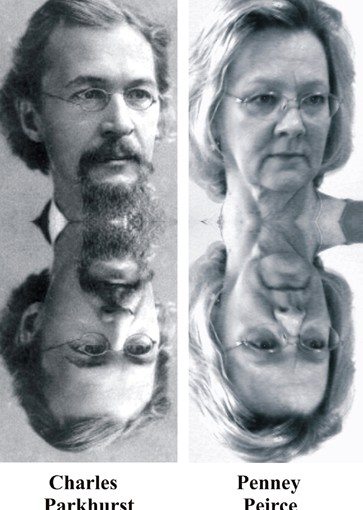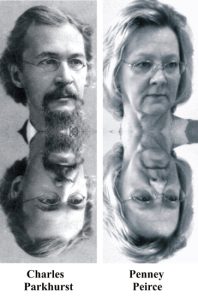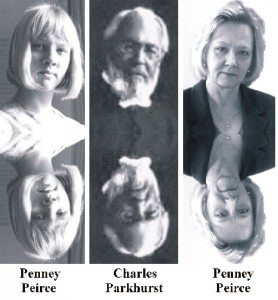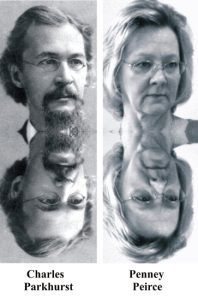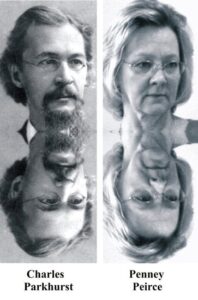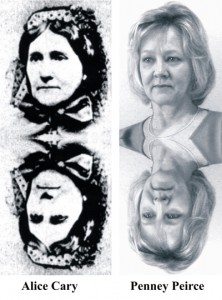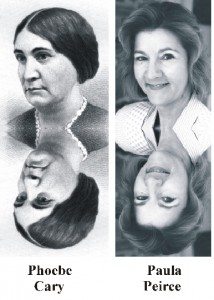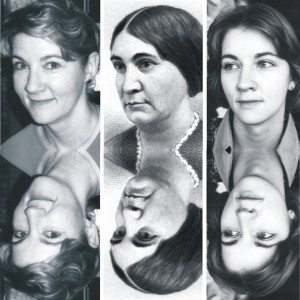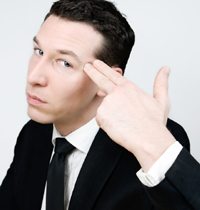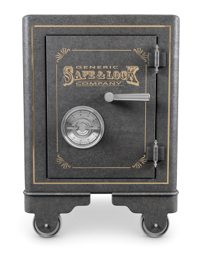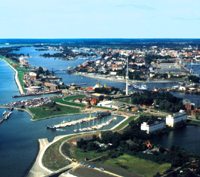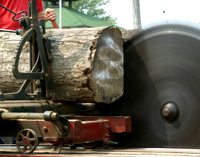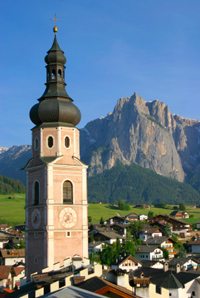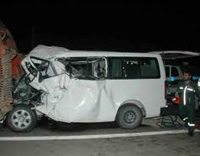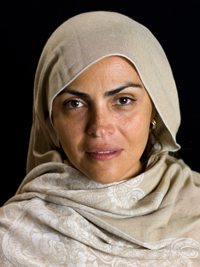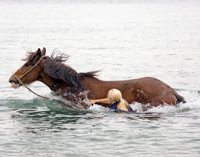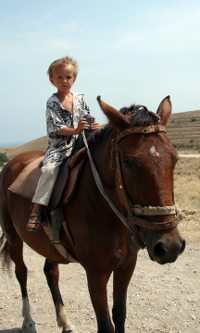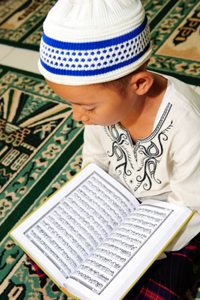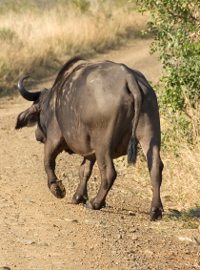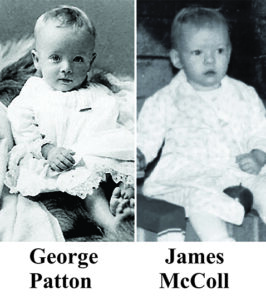 George S. Patton | James Mattis Reincarnation Case Proposed by: Walter Semkiw, MD
George S. Patton | James Mattis Reincarnation Case Proposed by: Walter Semkiw, MD
George S. Patton | James McColl Reincarnation Case Proposed by James McColl, Derived through: Past Life Memories in Childhood and Adulthood
Cases Affirmed By: Spirit Being Ahtun Re in Kevin Ryerson Sessions
From: The Past Lives and Reincarnation of General George S. Patton Jr., by James McColl
Note: Click on Images to Enlarge Them
Preface to James McColl’s Book on His Past Life as George S. Patton, by Walter Semkiw, MD
James McColl contacted me a few years ago and shared that he has memories of being United States World War II General George S. Patton.
As reincarnation research has revealed that people can have very similar facial features from one lifetime to another, I asked James to send images of himself to me. I found that as an adult, James is rotund and has a jolly face, quite opposite to the visage of Patton. On the other hand, in a photo taken when James was a child and one when James was in high school and dressed in his ROTC (military cadet) uniform, he looks very much like a young George Patton.
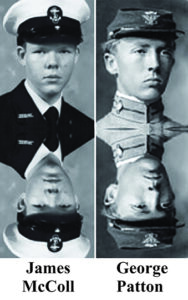 I also asked James what he did for a living, as people generally pursue similar careers from one lifetime to another. He explained that he is a special education teacher. In this capacity, he instructs individuals with various disabilities. This seemed opposite to the type of work that a reincarnated Patton would do.
I also asked James what he did for a living, as people generally pursue similar careers from one lifetime to another. He explained that he is a special education teacher. In this capacity, he instructs individuals with various disabilities. This seemed opposite to the type of work that a reincarnated Patton would do.
The Reincarnation Research of Ian Stevenson, MD at the University of Virginia
A primary mission of mine is to disseminate evidence of reincarnation and in particular, the work of Ian Stevenson, MD, as this research can help create a more peaceful world.
Stevenson was an academic psychiatrist at the University of Virginia who, over a period of 40 years, studied young children who had spontaneous past life memories that could be objectively validated. In the series of 2500 children that Ian Stevenson researched, in approximately 1500 of these cases, past life memories were objectively validated. Stevenson’s cases do show that facial features and behavioral traits can remain consistent from one lifetime to another.
In addition, this research demonstrates that souls can change religion, nationality and ethnic affiliation from one lifetime to another. Most wars and conflicts are based on differences in these cultural markers of identity. Understanding that these factors can change from one incarnation to another will lead to a more peaceful world. A powerful example of change in religion and nationality involves:
Reincarnation Case of Anne Frank | Barbro Karlen
Other change of nationality and religion cases can be reviewed at:
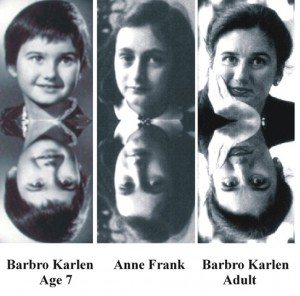 Reincarnation Cases with Change of Religion, Nationality and Ethnic Affliation
Reincarnation Cases with Change of Religion, Nationality and Ethnic Affliation
Ian Stevenson’s research is featured in my book, Born Again, and can be reviewed at:
Children’s Verified Past Life Memories at the University of Virginia
Ryerson-Semkiw Reincarnation Research
In addition to promoting the work of Ian Stevenson, I have worked with trance medium Kevin Ryerson, who has been featured in several of Shirley MacLaine’s books. Kevin channels a spirit being named Ahtun Re who has demonstrated to me that he has the ability to make past life identifications with a high degree of accuracy. I have worked with Kevin and Ahtun Re since 2001 and our findings are found in my books Born Again and Origin of the Soul and the Purpose of Reincarnation.
After James McColl contacted me with his story, I asked Ahtun Re if James is indeed an incarnation of George Patton. Ahtun Re told me that he is, and he encouraged me to work with James.
The Past Life Karma of General George S. Patton
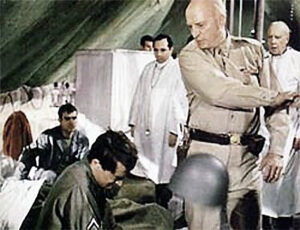 I then asked Ahtun Re if James McColl’s vocation as a special education teacher is related to the famous scene in the movie, Patton, in which George Patton slaps a soldier in a medical tent who was having some sort of mental or emotional breakdown related to the horrors of war. Patton had no sympathy for this soldier, calling him a coward. Ahtun Re confirmed that James became a special education teacher to atone for the karma incurred by Patton in striking and humiliating the mentally disabled soldier.
I then asked Ahtun Re if James McColl’s vocation as a special education teacher is related to the famous scene in the movie, Patton, in which George Patton slaps a soldier in a medical tent who was having some sort of mental or emotional breakdown related to the horrors of war. Patton had no sympathy for this soldier, calling him a coward. Ahtun Re confirmed that James became a special education teacher to atone for the karma incurred by Patton in striking and humiliating the mentally disabled soldier.
Split Incarnation in the Patton Reincarnation Cases of James Mattis and James McColl
Reincarnation research, including the work of Ian Stevenson, MD, demonstrates that souls can animate or inhabit more than one human body at a time. I call this phenomenon “split incarnation,” while Stevenson called these “cases with anomalous dates,” as lifetimes overlapped in time.
Knowing this, I also asked Ahtun Re if there was a split of Patton who was pursuing a military career. Ahtun Re told me that this was true and shared that this split was a prominent officer in the US military, though he did not tell me specifically who this person was.
About three years later, President Donald Trump appointed Marine General James Mattis as US Secretary of Defense. When I first saw Mattis on television, I immediately had the intuition that Mattis is the other incarnation of George S. Patton, which Ahtun Re later affirmed. The physical remembrance between Patton and Mattis is striking. View the:
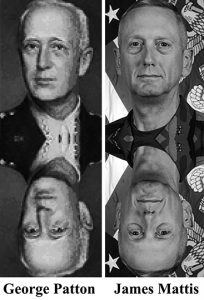 Reincarnation Case of George S. Patton | James Mattis
Reincarnation Case of George S. Patton | James Mattis
The Past Life Memories of General George S. Patton and James McColl
One of the most common questions that I am asked is: “Why don’t more people remember past lives?” I, in turn, posed this question to Ahtun Re. His answer was that past life memories can be considered as a type of psychic gift.
George Patton had this aptitude. In his well-known poem, Through a Glass, Darkly, Patton describes multiple past lives as a soldier, warrior and killer. Does this mean that the soul of Patton will continue to reincarnate as a soldier? The answer is not necessarily. Leadership can be used for both destructive and constructive purposes.
James McColl has the same psychic gift of recalling past incarnations and in fact, the scope of his past life recall is amazing. In this lifetime, James has been a positive influence on many. Hopefully, in the future, due to lifetimes like that of James, the soul of Patton will look back and reflect through a glass, brightly.
Excerpts from The Past Lives and Reincarnation of General George S. Patton Jr., by James McColl
My earliest memories extend back to a time before my birth. As a preschooler, I could vividly recall these memories of my existence in the spiritual realm, between earthly incarnations, but over the years, they have gradually faded, and now only fragments remain. However, there is one specific pre-birth memory, which I’m able to recall in great detail. This is the memory of choosing my parents.
I recall travelling in the company of another being to observe several families from whom I was to make my selection. The only time I ever saw my paternal grandfather, James E. McColl, was on this occasion. He died shortly afterwards of a heart attack on December 14, 1968, while a patient in the hospital in Marion, South Carolina. I was not born until August 1969.
As a child, I was able to recall details of my life between lives and the preparations for my return to this world. I remember not being in any hurry to return, but knowing I needed to eventually. I also recalled visions of battlefields, destruction and smoldering ruins, and the accompanying feeling of wishing not to return to such scenes.
However, as a child I did not understand this particular memory or its significance. At some point, I became aware of the need for an individual to return to the physical world to perform a mission, which excited me enough to volunteer to go. As a child, although I tried, I never could recall what the mission was for which I had volunteered.
The Christian Upbringing of James McColl Conflicts with His Past Life Memories
 I was born in Laurinburg, North Carolina and raised in a Southern Baptist home, so from an early age I was taught that death resulted in either Heaven or Hell with no mention ever of the possibility of returning to life on Earth. It was not until about my fourth-grade year in school that I was exposed to the concept of reincarnation.
I was born in Laurinburg, North Carolina and raised in a Southern Baptist home, so from an early age I was taught that death resulted in either Heaven or Hell with no mention ever of the possibility of returning to life on Earth. It was not until about my fourth-grade year in school that I was exposed to the concept of reincarnation.
My sister mentioned it at supper one evening as a subject she had studied at school in either her geography or world history class. Over the course of the dinner conversation, it was dismissed as a non-Christian belief held largely by the population of India. Long before this conversation, I was aware that I had lived before, but I believed I had only been sent back into this world to perform a mission. I believed my return was an exception and not the rule.
For this reason, I assumed I should never mention what I remembered of the time before my birth. As a child I would occasionally think about the fact that I had made it to Heaven once before, and sometimes wonder if I possibly ran the risk of being condemned to Hell upon my death for any of my actions in my present lifetime. These thoughts contributed to my strong desire to know what happens to a person, at death.
Although I was born in a Southern Baptist home, it was through a combination of my own pre-birth memories, and my mother’s influence, that I came to have a broader view of spiritual matters. Every morning at breakfast, my mother would read aloud the daily horoscope from the newspaper, and my father would often respond by saying that there was no validity to astrology. I still remember how fascinated I was when about the time I was in second grade my mother read to me an article from the newspaper concerning Dr. Raymond Moody and his pioneering research concerning the near-death experience. It was about this same time she told me an elderly man named Percy Covington (1882-1961), from her hometown of Mt. Gilead, North Carolina had used a Ouija board to receive messages from the spirit world.
Among the metaphysical experiences that I had during childhood, one in particular made a lasting impression, because of the unique way in which it occurred. Although I didn’t understand its significance at the time, as an adult I discovered that what I saw that day was a scene from my past life as Lovick William Rochelle Blair, (1821-1882), which was preserved in a photograph. Upon his death, Blair reincarnated as George S. Patton Jr. (1885-1945). The following is my account of the experience.
A Child’s Vision of Past Life Memories
One summer day in 1972, when I was about three years old, I had been playing outside in the swing; being a warm sunny day, after a while I felt hot and thirsty. I went inside the house and asked my mother for something to drink. She fixed a bottle of Tang, and I carried it into the den, lay down on the cool linoleum floor, and began drinking it.
As I lay there I gazed up at the walls, and ceiling; and as I relaxed, I observed the details of the horseshoe designs on the light fixture, and the patterns in the grain of the knotty pine paneling. In the background I could hear the antique Ansonia shelf clock; which rested on the mantle, tick tock away the minutes. My focus then shifted to the pictures on the walls. First, my eyes rested upon the large picture, which hung above the back of the sofa; a depiction of a Swiss mountain range. Then I shifted my eyes to the picture on the wall to my left, an Otto Kuhler print Big Mountains, Little Engines. I gazed at it awhile, absorbing its colors and details.
A Painting of a Train Comes to Life
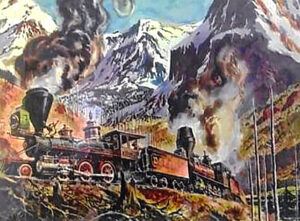 All of a sudden; as I was looking at it, the image came to life, the wheels on the engines began to turn round, and the train began moving down the track; smoke puffing out of its smokestack. The space behind the glass of the picture frame began to fill with the smoke; like a thick fog rolling in, eventually concealing my view of the train. Even at such a young age, I knew I was seeing something out of the ordinary, so with intense interest and curiosity, I continued to watch without moving, or blinking an eye. Then; like fog, it gradually lifted, but what was revealed was no longer a scene of a train passing through the mountains.
All of a sudden; as I was looking at it, the image came to life, the wheels on the engines began to turn round, and the train began moving down the track; smoke puffing out of its smokestack. The space behind the glass of the picture frame began to fill with the smoke; like a thick fog rolling in, eventually concealing my view of the train. Even at such a young age, I knew I was seeing something out of the ordinary, so with intense interest and curiosity, I continued to watch without moving, or blinking an eye. Then; like fog, it gradually lifted, but what was revealed was no longer a scene of a train passing through the mountains.
The image had transformed into a period room furnished in what, years later, I would recognize as the American Empire style. At first, the room was devoid of people. Then a group, dressed in mid-nineteenth century apparel entered the scene. They gathered around a center table, which stood before a large mahogany secretary bookcase. When everyone was in their place, all movement ceased, and the image froze as if it was a photograph.
I wanted someone else to witness this phenomenon besides myself, so I called for my mother to come see it. I had a feeling these people were my ancestors, and hoped she could identify them for me too. She was in the kitchen, and answered that she was in the middle of doing something, and couldn’t stop at that moment.
Thinking my sister might be in her bedroom, I asked my mother: “Where is Trudy?” She answered saying Trudy had gone to play at the home of her friend Phillip Tucker.
Curious, to see what might happen next, and not wanting to miss anything, I continued to lie there with my attention focused on the picture. Within a few minutes, what appeared like fog, or white smoke, began to form and swirl behind the glass of the frame, until I could no longer see the people assembled around the table. As it swirled, colors began to emerge. When the blurry swirl of colors solidified, I was once again looking at a picture of a train passing through the mountains.
Within seconds, my mother walked into the den and asked, “What do you want me to see?” I tried to describe what happened, but with my limited vocabulary, it was difficult. The best I could do was tell her the picture had changed from a train to a picture of some people dressed in the manner of the characters on the television programs Bonanza and Gunsmoke; the only frame of reference to the Victorian era that I was familiar with at the time.
 The image, which had been revealed to me, didn’t seem significant at the time. What impressed me was seeing the picture come to life, and transforming from one scene to another. Briefly, I wondered if all pictures could come alive and transform from one scene to another, when nobody was looking, similar to the way the toys in the movie Toy Story are depicted. Finally, I decided that this phenomenon was unique to the Otto Kuhler print. I believed that it was a magic picture. Over the next few years, I would occasionally sit and watch it for a couple of minutes at a time, hoping that I might see it transform itself again, but it never did.
The image, which had been revealed to me, didn’t seem significant at the time. What impressed me was seeing the picture come to life, and transforming from one scene to another. Briefly, I wondered if all pictures could come alive and transform from one scene to another, when nobody was looking, similar to the way the toys in the movie Toy Story are depicted. Finally, I decided that this phenomenon was unique to the Otto Kuhler print. I believed that it was a magic picture. Over the next few years, I would occasionally sit and watch it for a couple of minutes at a time, hoping that I might see it transform itself again, but it never did.
Throughout childhood, I experienced a phenomenon that for the lack of a better term, I thought of as watching television in my mind, but today I know it is called spontaneous past life recall. During that same time in my childhood, I was having dreams in which I now realize I reexperienced events from multiple past lifetimes. By the time I was a college student, I had begun to read books on near death experience and would occasionally discuss what I had read with my father.
A Longing to Find a Past Life Family
It was during one of our conversations that he suggested that I might enjoy reading about Edgar Cayce. This is how I came to have a better understanding of my childhood experiences, and it, along with the book, Across Time and Death, by Jenny Cockell, reawakened in me the desire to discover my identity in a past life. In the summer of 2002, remembering a promise I had made to myself as a child, that as an adult I would someday find my past life family and let them know that I was alive, I set out to discover my past life identity.
By the end of the summer, I had not had any luck and was beginning to think I never would. Finally, in October, I had an unexpected breakthrough and discovered my identity in a past life. Another few years passed by and one day while browsing in a bookstore I happened to come across a book by the title of How to Uncover Your Past Lives. This book inspired me to continue my search for my identity in additional past life incarnations, ultimately resulting in my discovery of my past life as General George S. Patton Jr.
Childhood Past Life Memories of Being George S. Patton
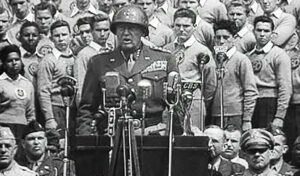
As I began to research the life of General Patton, the first thing I happened to recognize was the film clip of the speech he made in Los Angeles on June 9, 1945. I experienced this exact scene in a vision I had in childhood, as I sat at the dining table one evening waiting for my mother to finish preparing the meal and call the rest of the family to the table for dinner. However, as a child, I did not have any idea as to what it was that I was experiencing/remembering/reliving.
From the vision I remember being introduced by a man that I am now able to identify as General Jimmy Doolittle, and then standing, approaching the microphones and looking out at the large crowd as I spoke. Listening to the speech on YouTube, I believe that General Patton’s voice and my own voice are similar; the difference, perhaps, being the accent, due to Patton being a native of California and the fact I have always lived in the Carolinas.
Past Life Memories of a Ship Attack and Being Splattered with Yellow Paint
As a young adult, I had a dream, which I have discovered, was an experience from General Patton’s life. The dream occurred sometime in the mid to late 1990’s. At that time, I was in my twenties. As the dream began, I was in a small boat or landing craft on a rough and choppy sea. The little boat is being tossed about, and I felt like at any moment I could easily be tossed out of the craft and into the sea. A battle is underway and there are numerous little crafts and large ships. The waters seem almost crowded with them.
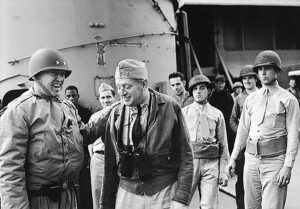
The little boat I’m on pulls up next to a large ship, and despite the conditions, I’m able to make my way up rope netting on to the ship. A short time later, I’m standing on the deck of the ship, along with a few other men. We were standing next to the rail looking towards the coast, watching the battle. I recall having binoculars, through which I would occasionally observe the action.
As we stood there, we were surprised when a large ship that was moored in the harbor fired a shell directly at us. We had thought that the ship was unable to engage in the battle and thus not a threat. We heard it fire and saw the smoke coming from the mouth of one of its large guns. This was the most frightening part of the dream. I still recall thinking that I was about to be killed when the shell reached its target. There was enough time to think I’m going to die, but not enough time to actually move from where I was standing, between the time the shell was fired and the moment it made impact.
The shell hit the side of the ship, directly below the spot where I was standing. When it did, I was splashed with seawater and what appeared to be bright yellow paint. Thinking that it was going to be my last moment alive, I was surprised and relieved to have been only splattered. A young man approached and offered to help me clean and dry the paint and water off my clothes, but I politely declined and laughed off the mess. Then I proceeded back to my cabin to clean myself up. It is at this point the dream ended and I woke up. I still remember feeling rattled the entire day after awakening from this particular dream. I felt as if I had actually had a close brush with death.
Afterwards, I replayed the dream over and over in my mind, trying to determine why I would have had such a dream. It was such a realistic and detailed dream, except for when the shell exploded and rather than being killed, I was splattered with yellow paint, which seemed to me like something that would occur in a Looney Tunes cartoon.
The only possible answer I found was an experience I had in Navy ROTC when a student in the 9th Grade. I had once gone on a field trip to Patriots Point in Charleston, South Carolina, which is a naval and maritime museum that features two actual World War II era ships; the aircraft carrier USS Yorktown and the destroyer USS Laffey. The ship upon which I was standing in my dream when I thought I was about to die reminded me of the USS Laffey.
As I was researching General Patton, I was surprised to discover that this was an actual experience from his life. It occurred on November 8, 1942 as General Patton’s troops were making an amphibious assault on Northern Africa. General Patton was standing on the deck of the USS Augusta when the French ship, Jean Bart, fired upon it, resulting in Patton being splattered with yellow paint. France at that point in time was not part of Western Alliance
Past Life Memories of Slapping Soldiers
 General Patton’s career was almost brought to an end by two slapping incidents that occurred in August 1943 during the Sicily campaign. For the rest of his life General Patton was haunted by the dark shadow cast by these two incidents where he had lost control of his temper and slapped and verbally abused two soldiers, who were suffering from battle fatigue. It wasn’t until after I discovered my past life as George S. Patton Jr. that I realized I had actually witnessed one of the slapping incidents in a spontaneous past life recall vision I had during my childhood. I experienced the vision sometime between August 1973 and December 1975.
General Patton’s career was almost brought to an end by two slapping incidents that occurred in August 1943 during the Sicily campaign. For the rest of his life General Patton was haunted by the dark shadow cast by these two incidents where he had lost control of his temper and slapped and verbally abused two soldiers, who were suffering from battle fatigue. It wasn’t until after I discovered my past life as George S. Patton Jr. that I realized I had actually witnessed one of the slapping incidents in a spontaneous past life recall vision I had during my childhood. I experienced the vision sometime between August 1973 and December 1975.
It occurred one day, while I was playing in the kitchen of my parent’s home when we lived in Garner, North Carolina. Instead, of viewing the scene through Patton’s eyes, I experienced it in the third person, as if I was watching television in my mind. Now as an adult, having since seen the slapping incident in the movie Patton, I can say it was portrayed very well, because it closely matched what I experienced in my vision.
At the time I experienced the vision I had no idea I was witnessing an experience from my past life. As a child, I thought I was seeing something that was actually occurring somewhere around the world at that very moment. I failed to realize that it had occurred thirty years earlier. It did not have in any way a historical feel to it.
My father watched the CBS Evening News with Walter Cronkite every evening and I thought what I had seen might appear on the news that day. As I remember watching the news as a young child, it seemed to me that Walter Cronkite was always talking about Vietnam and Watergate. The images I had seen in my vision were of soldiers, so they matched up in my mind with the scenes of Vietnam I saw on the news. I remember the vision scared me, because the man had been so angry yelling, slapping the soldier and pulling his pistol on the man and threatening to shoot him.
In hindsight, I guess I was allowed to experience it in the third person, since I was a young child and it had been such an intense and frightening scene. I still remember when the vision ended thinking that the man I had seen was extremely angry, and wondered why I had been shown that particular scene.
Past Life Relationships
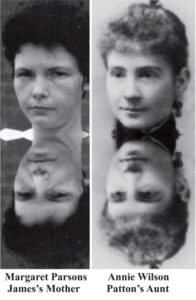 One piece of observable evidence, useful in establishing past life identity, is the appearance of members of one’s soul group the people with whom an individual has shared a close association over multiple lifetimes.
One piece of observable evidence, useful in establishing past life identity, is the appearance of members of one’s soul group the people with whom an individual has shared a close association over multiple lifetimes.
Based on the consistency of facial architecture from one incarnation to another, I believe my mother is the reincarnation of Annie Wilson, who was the sister of General Patton’s mother. She was like a second mother to Georgie. Annie Wilson died on November 26, 1931 and my mother; Margret Frances Parsons was born December 27, 1937. Notice in particular how closely the shape of the ear carried over in addition to the other facial features, when Annie Wilson reincarnated as Margaret F. Parsons. Kevin Ryerson has confirmed that my mother is the reincarnation of Annie Wilson.
Past Life Talent as a Rifle Marksman
General Patton was known to be a great marksman. Growing up my mother always cautioned me concerning the danger of guns. As I approached the age of twelve, I wanted an air rifle. By then many of my good friends either had, or were getting one. My parents were slow to allow me to have one, thinking I might shoot my eye out, or the neighbor’s window. Finally, I was allowed to purchase one. I was excited when the day arrived.
My father took me to the local K Mart and I bought a Daisy BB and a pellet air rifle. What amazed me was I discovered that I was a better marksman than my friends who had been shooting longer than I had. It seemed to come natural to me. I remember it crossed my mind at the time that perhaps it was a skill I had developed in a past life, maybe as a pioneer in early America when the country was being settled. This was the first times I gave the idea of reincarnation any serious consideration.
A Past Life Dream of an Exploding Lamp in the Life of George Patton
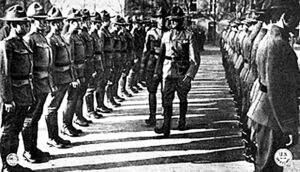
One of the parallels between my present life and my past life as General Patton involves a pressurized gasoline lamp. When I was around five or six years old, I had a dream, which I now know was of my experience as Patton during the Punitive Mexican Expedition of 1916. In the dream, I enter a tent. It is dark, so I light a lamp and it explodes in my face and sets myself as well as the tent on fire. I then quickly exit the burning tent and put out the fire.
In my present life I collect antiques and have been doing so since I was in the eighth grade. As a student in high school and college, I enjoyed going to the Florence Flea Market and looking for antiques. On one such trip, I purchased an antique Coleman Quick-Lite gasoline lamp. Shortly afterwards my father and I learned that it could be sent to the Coleman Company and restored to work. We sent it off and it came back with the pump to pressurize it. My father asked me if I wanted the honor of pumping it up and lighting it. I declined and asked him to do it.
The dream did not enter my conscious mind at the time, but I had a fear of the lamp exploding in my face, which kept me from lighting it. Years later when I began to research my past life, I came across Patton’s description of the lamp exploding in his face. I recognized it as matching detail by detail my dream. However when I purchased the lamp and later could not bring myself to light it, I didn’t connect it with the dream. It wasn’t until I read General Patton’s description of the incident that I finally realized it was interconnected. Patton recorded the following details in a letter to his wife.
I came back from the movies and having some work to do I pumped up my lamp and lit it. It did not burn well so I started pumping again while it lit. There was too much gasoline in it so when I stopped pumping a lot of gasoline flew out of the hole instead of air and caught fire. As it came it hit me in the face and got in my hair. I ran outside and put myself out. Then came back and put out the lamp and tent. Then I reported to General Pershing that I was burned and went to the hospital.
James, as a Child, Asks for a Antique Car Resembling One Patton had used in his Mexican Campaign
I have always liked antique automobiles. When I was around three years old, my Grandmother McColl asked me what I wanted for Christmas. I replied a Beverly Hillbillies’ car, which at such a young age was my best description of an old timey car from the early years of the 20th century.
She understood what I wanted and gave me a battery powered Model T styled toy car. I have come to realize that the antique style toy automobile my grandmother gave me resembles the 1915 Dodge touring car in which Patton, on May 14, 1916, led the first motorized attack in the history of US warfare. The incident concluded with the killing of Julio Cárdenas and two of his guards. It also resulted in Patton receiving widespread media attention and earning the good favor of General Pershing.
The Fatal Automobile Accident of Patton Replicated in the Life of James McColl
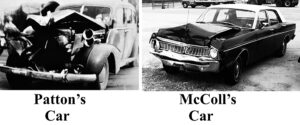 General Patton’s fatal car accident of December 9, 1945 appears to possess a number of similarities to my own car accident of November 8, 1988. In both cases, the accidents occurred in an identical manner. A truck approaching from the opposite direction made a sudden and unexpected left turn, bringing it directly into the path of the car in which General Patton was a passenger.
General Patton’s fatal car accident of December 9, 1945 appears to possess a number of similarities to my own car accident of November 8, 1988. In both cases, the accidents occurred in an identical manner. A truck approaching from the opposite direction made a sudden and unexpected left turn, bringing it directly into the path of the car in which General Patton was a passenger.
Likewise, my accident was caused by a truck approaching from the opposite direction making a sudden and unexpected left turn, bringing it directly into the path of my car. Just as General Patton’s driver had done, I immediately stepped on the brakes, but still collided with the truck. In both cases, the right front fender of the truck struck the front of the car. The front end of General Patton’s 1938 Cadillac was demolished in his accident. Likewise, the front end of my 1968 Falcon was demolished too.
General Patton was not wearing a seatbelt since they were not a standard automotive safety feature until many years later. Patton was thrown forward, struck his head and broke his neck. I was wearing a lap belt without a shoulder strap and was thrown forward striking my head on the windshield, but the lap belt restrained me enough it prevented me from sustaining a serious injury. The impact broke my skin causing it to bleed where my head made contact with the windshield, just as General Patton bled from the head wound he received in his accident.
The impact of the collision pushed the fenders against both of the Falcon’s front doors, so that I was unable to open either of them. This caused me to have to cross over the front seat and exit the car through one of its back doors, similar to General Patton having to be removed from the Cadillac after his accident through one of its back doors. It is interesting to note that the color of the staff car in which General Patton had his fatal accident was army green and my 1968 Falcon was dark green with a white top. The two large white stars painted on Patton’s car correspond with the white color of the top of my car.
For the full story of the discovery and verification of my past life as General Patton, as well as six earlier past lives, please read my book, The Past Lives and Reincarnation of General George S. Patton Jr.
Principles of Reincarnation and Understanding Past Lives
 Physical Resemblance in Reincarnation Cases: James McColl, in his youth, looked very much like a young George Patton.
Physical Resemblance in Reincarnation Cases: James McColl, in his youth, looked very much like a young George Patton.
Past Life Talent: Patton and James McColl both have demonstrated the gift of remembering past lives.
Planning Lifetimes and Relationships Renewed through Reincarnation: James McColl has identified his mother as the reincarnation of Patton’s maternal aunt, Annie Wilson, was like a second mother to Patton.
Split Incarnation or Parallel Lives: James McColl and James Mattis derive from the same soul, a phenomenon I term “split incarnation” and which Ian Stevenson, MD called “cases with anomalous dates,” as lifetimes overlapped in time. James Mattis was born in 1950, while James McColl was born in 1969, so an overlap of 19 years exists.
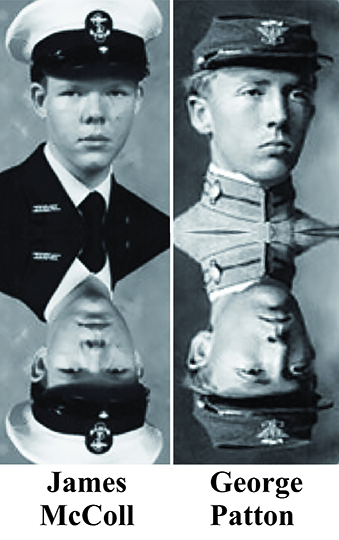





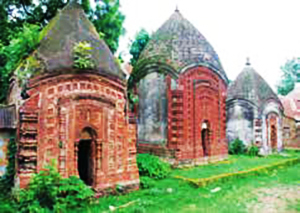
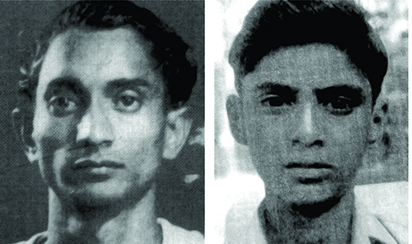
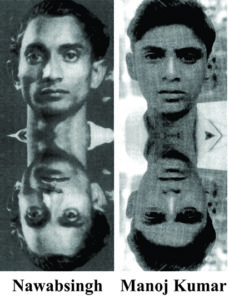


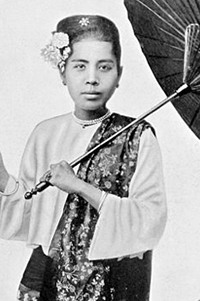




 Independently researched reincarnation cases, including many studied by
Independently researched reincarnation cases, including many studied by 